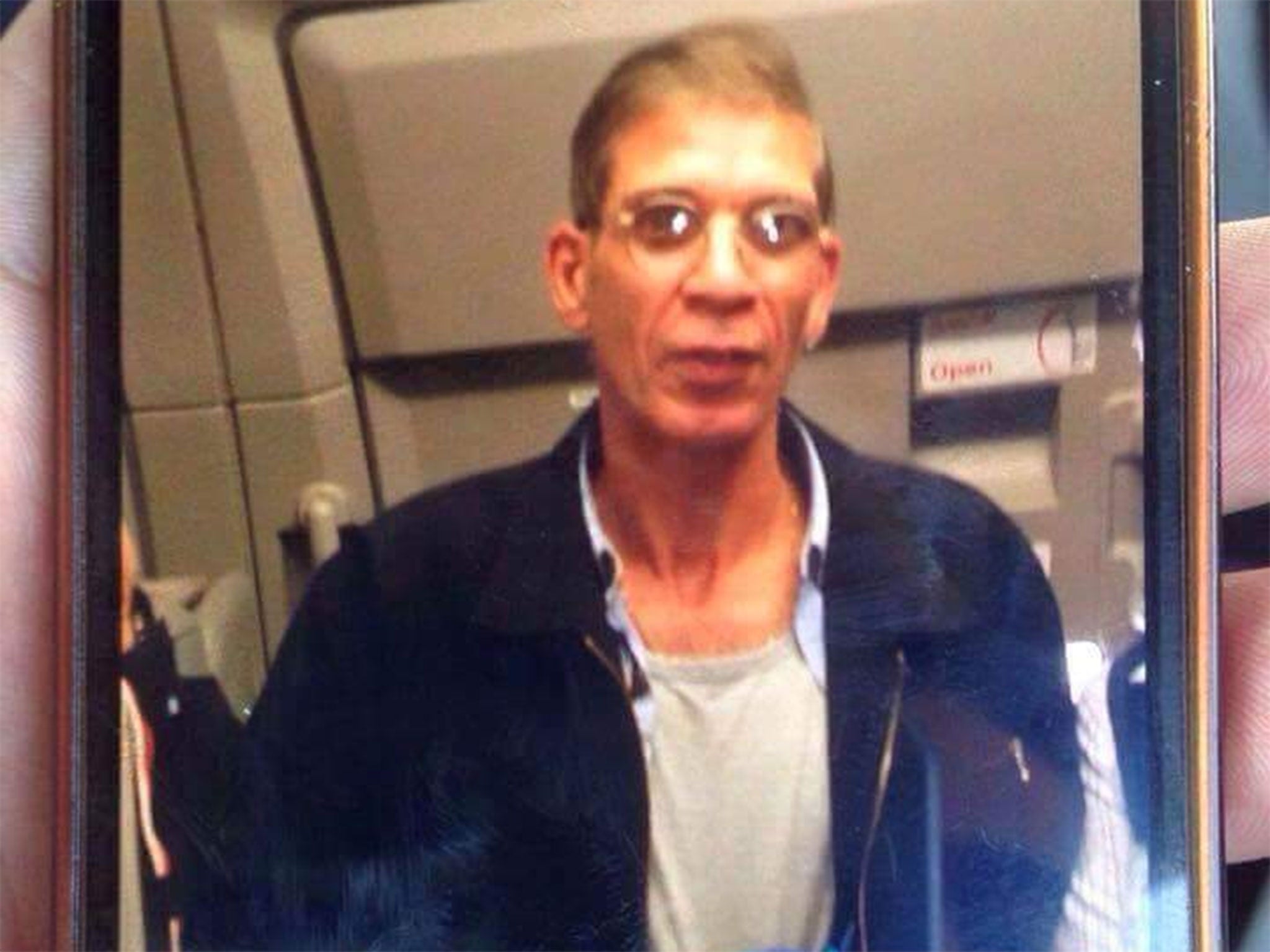EgyptAir hijacker Seif Eldin Mustafa took control of flight MS181 using 'bomb' made of phone cases
First images emerge purporting to show hijacker as he hands himself in to authorities

Your support helps us to tell the story
From reproductive rights to climate change to Big Tech, The Independent is on the ground when the story is developing. Whether it's investigating the financials of Elon Musk's pro-Trump PAC or producing our latest documentary, 'The A Word', which shines a light on the American women fighting for reproductive rights, we know how important it is to parse out the facts from the messaging.
At such a critical moment in US history, we need reporters on the ground. Your donation allows us to keep sending journalists to speak to both sides of the story.
The Independent is trusted by Americans across the entire political spectrum. And unlike many other quality news outlets, we choose not to lock Americans out of our reporting and analysis with paywalls. We believe quality journalism should be available to everyone, paid for by those who can afford it.
Your support makes all the difference.The man who hijacked an EgyptAir jet on Tuesday morning did so using nothing but a number of iPhone cases tied together with cloth, authorities in Egypt and Cyprus have said.
The first images are starting to emerge of the man believed to be the hijacker who diverted a plane from Cairo to Cyprus, leading to a tense six-hour stand-off.
Identified by officials as Egyptian national Seif Eldin Mustafa, the images purport to show a thin man in glasses, in his late forties or early fifties, sporting what looks like a suicide bomb belt.
But in a statement, Egypt's Civil Aviation Ministry said they had determined the belt did not in fact contain any explosive material.
"Security in Cyprus confirmed that the explosive belt worn by the man who hijacked the plane was fake," it said.
A blurred Reuters image is believed to show Mustafa exiting the plane in a jacket along with the last remaining hostages onto the tarmac at Larcana airport.
And at a press conference shortly after the hijacker's arrest,Cyprus' Foreign Affairs Minister Ioannis Kasoulides said the suspect surrendered voluntarily and was in a fragile mental state.
On motives, officials said the hijacker kept asking for "many things", including to go to another airport and to speak to an EU official as well as the previously-documented demands to see his ex-wife and for the release of political prisoners.
And, revealingly, Kasoulides said that the "explosives belt" the hijacker was wearing proved to be a number of phone covers.
Earlier, three images of Mustafa were alleged to have been taken at various points while the hostage situation was still ongoing inside the plane.
One shows clearly the device strapped round Mustafa’s waist.
Another image shows Mustafa standing at the front of the plane on his own, and was taken from behind seats a number of rows away.
And a third shows Mustafa standing with an almost casual stance next to an unknown passenger, who appears to be grinning.
Earlier, the man was incorrectly named by officials as Ibrahim Samaha, an Egyptian vet based at the university in Alexandria. But that was later corrected – not least when Dr Samaha himself spoke to the BBC to say he was a passenger on the flight and had since been released, while the hijacker was still on the plane.
Join our commenting forum
Join thought-provoking conversations, follow other Independent readers and see their replies
Comments